Why UV lamps need to have filter added?(Role of filter in industrial inspection)
Why do UV lamps need to have filter added? Filters have 2 function. One is to block the stray light. The other is to prevent the penetration of other harmful light during inspection. First we will introduce the classification of UV lamps, application of industrial inspection and the classification of filters, finally we talk about the features and hazards of black glasses, discuss the role of filters.
UV lamps: Generally speaking, there are 3 categories of UV lamps. First. UV bulb lamps. The working principle is that the inner tube is filled with inert gas. The inner wall is coated with fluorescent material of rare earth components(sometimes black fluorescent materials, because the tube is black, so it is called black light). Bulb type of UV lamps is with comparatively wide spectral, spectral range + - 30NM even wider, such as UVA bulb lamp spectral: 320-390NM. It features low pricing. But the UV intensity is relatively low. It is generally used in the lower requirements of the test.
The second category: full spectrum lamps, spectrum is 300-800NM, such as HID UV lamps, sun lamps. This type features wide spectrum, need to do through the filter cut-off. The spectral cut-off range is wide. Eg UVA 320-40NM (In addition to some special UV lamps, not to be discussed for the time being, such as Zinc lamps). This type features high UV intensity and high pricing, which is only used in special areas, such as: photolithography exposure, etc.
The third category is UV LED lamp, which is the latest technology. It is a light emitting diode chip. The working principle is through the injection of electric current in the semiconductor material and composite, producing the ultraviolet light. It features narrow spectrum. The spectrum range is +- 5NM. In last decade, the UV LED technology has advanced by leaps and bounds, especially UVA, mainly in the UV intensity. 90% of UV are with LED technology in current application. Meanwhile, it can not replace the second category of UV lamps in some special areas.
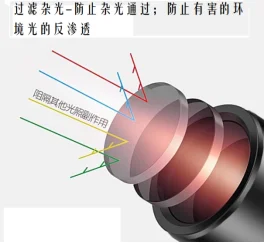
Classification and features of filters.
Filters are classified by material and craft: simply divided into synthetic filters and coated filters.
Synthetic filters(UVA) are mainly ZB1, ZB2, and ZB3. It is a selective absorption type of filter that combines different materials in a certain ratio. The color is black, also known as black glass. Features: cheap with low transmittance. ZB1 and ZB2 are with 50% transmittance at the very beginning. During the usage, the black glasses will be in contact with the air. Then a chemical reaction, Fogging occurs. Because of the Fogging phenomenon, the filter needs to be replaced frequently. Or the light transmission can be further reduced. The ZB1 and ZB2 light transmission can be only with 30% after more than 6 months usage. The longer the use of time, the lower transmission the filter. This is determined by the craft of ZB1 and ZB2 filter and there is no way to change it.
The ZB1 and ZB2 black glasses are mainly used in the second category type UV lamps before 2015, due to the request for high UV intensity UV lamps(Usually 100-200W of mercury lamps, 35W HID lamps.
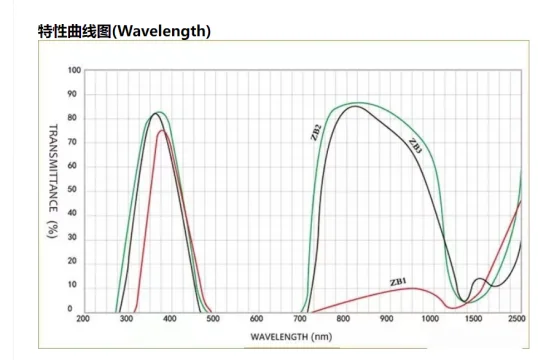
ZB1/ZB2 Characteristic curve.

Fogged black glasses
Coated filter: coated on white glass or quarts glass. According to the cut-off, it can be divided into long wavelength pass, short wavelength pass, narrow band and so on.
Product features: high transmittance, narrow wavelength range(according to requirements) and other characteristics. But the pricing is expensive, which is generally used in high end industrial inspection field. (not focus on this field).
The application of filters in industrial inspection:
First, we should understand why we need to add the filter in industrial inspection?It is due to the inspection requirements and industry standards, mainly for NDT in aviation industry, eg ASTME 3022 and national GB/T5097-2020 and so on. There are clear requirement about the filter. These standard has requirements for visible light emission. The visible light emission can not exceed 20lux. Higher visible light emission will affect the final inspection results. Before the year 2015, the NDT is mainly with ZB1 and ZB2, due to the favorable pricing, specially for large size. However, according to the regulation, it needs to be calibrated every month, to check if the visible light emission and UV intensity within the standard range. Nowadays, for the aviation NDT and other with specific testing requirements and industry standards about the filters, they are mainly with UV LED lamps. Because UV LED is with small size of bracket, around 15-20MM. So most applications are with coated filters. Cos there is no need for a large size of coated filters. In addition, the coated filter can be last for 1-2 years, even longer. You do not need to replace the filter frequently.
Hazards of irregular use of ZB1/ZB2 black glass:
We mentioned the features about the black glasses. Because it is a synthetic selection of absorption glasses with low light transmission ratio.With the air contact, the fogging thing will occur. The transmission ratio will gradually decline with the usage of a certain amount of time. After like 6 months usage, the transmission can be 30% remained, need to replace it frequently.
Why does the industrial inspection need to use filters? Because of the test requirement and industry requirements. Currently only NDT inspection need to add filters. It is make that quite clear in the ASTME 3022 and GB/T5097-2020 standard, mainly on the visible light emission. The visible light emission needs to be less than 20 lux. In other applications, there is no clear requirement about filters. Because the visible light emission do not do harm to the inspection.
What application need to use the black glasses? Due to technical issues, before the year of 2015, the second type of UV lamps,full spectrum of mercury lamps and HID lamps, ect,need to add black glasses. The main purpose is the request for high UV intensity UV lamps. Coated filter with large size are quite expensive. So the market select the black glasses. It is due to the cost and technical demand. In the last decade,due to the development of LED technology, the cost and UV intensity issues are fixed. The application with second type UV lamps are greatly reduced, only for some special inspection and areas, like 5% of market applications, such as photolithography, long range UV lamps.
Whether it is necessary to add black glasses with UV led lamp? Due to the development of LED technology, the high UV intensity and reasonable cost can be realized at the same time. For the inspection with requirement and standards, we can add the coated filters. Because the diameter of bracket of the UV LED is generally 15-20MM. Small size of coated filter can be added, which can last long time and do not need to be replaced frequently. Currently most UV lamps with filters are used for some common inspection applications, eg banknote check, jewellery inspection, They do not belong to the industrial inspection application. They are just for regular application for UV LED lamps. These application, from the test results point of view, under the same condition, the higher UV intensity, the better the test results. These is no test requirements and industry standard on the limitation of visible light emission. If with black glasses,the light transmittance ratio can be only with 30% around. Meanwhile, you need to replace the black glasses frequently. That is to say, the addition of black glass of UV LED lamps will reduce the UV intensity and affect the test results, will undermine the final test results.
Many lamps with black glasses are just for advertise purpose. They do not understand the features and defects of black glasses. It makes no sense. For most applications, the UV LED lamps do not need to add black glasses. Because all these belong to regular applications.
The views and opinions above are derived from real test and long term practice in professional applications. Copyright belongs to SUNLONGE company. Please note the source if quoted.
How to select the suitable UV lamp for your NDT needs?
Introduction
In light of the boom in the lighting industry, loads of choices for lamps exist and have generated enormous contribution to the development of diverse industries, yet most significantly, the technology aspect. In particular, the invention of UV lamps (Ultraviolet lamps), which aim at producing electromagnetic radiations with wavelengths lying between the visible light and X-rays, allows immediate detection of leakage that is not visible to human eyes. The UV NDT lamps and the UV LED lamps further create drastic flexibility and greatly reduce the amount of safety concerns during the process of fluorescent methods, which have encouraged the implementation of countless experiments and testing. Despite the numerous positive influences generated, several factors should be taken into account to optimize their effects in advance of the downstream applications.
Factor 1: Peak Wavelength & Emission Spectrum
On the grounds that the peak wavelength of the UV lamps is solely determined by their manufacturing process, there is a possibility that a huge variation exists, which affects the accuracy of inspection. Consequently, technicians should choose UV lamps with a peak wavelength of 360 to 370 nm. While for the emission spectrum, due to its wide range, the risk of visible light contamination may appear and degrade the inspection upon an unsuitable choice of lamp. Only lamps including a UV-A pass filter are thus recommended.
Factor 2: Beam Profile & Working Distance
Since UV lamps are designed to perform under various conditions and environments, they are able to cater the need for both narrow and wide beam areas. For a narrow beam area, the lamps are equipped with a focused intense spot for a close-up inspection. While for a wide beam area, an array of LEDs is required. Yet, a trade-off between the area of coverage and stability appears, specifically, the closer the array to the inspection surface, the greater the risk of patterns of bright and dim spots. As a consequence, to ensure the accuracy of the inspection, the technicians should at least maintain a minimum distance of generating an even coverage of the scanned area, namely, the working distance of a UV LED lamp.
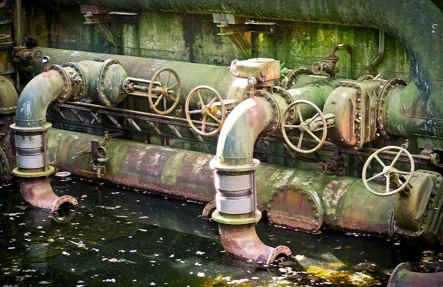
Factor 3: Power Supply
Considering the low energy consumption of both UV NDT lamps and UV LED lamps, their high portability boosts and simplifies the inspection process. However, a major concern regarding the power supply arises. On account that the intensity of lamps is directly related to the supply voltage and current, the power supply is playing a critical role in determining their efficiency and effectiveness. Fortunately, the improvement of technology has enhanced the design of the lamps. They thus incorporate constant-current circuits that enable the monitoring of the battery discharge. They will automatically turn off once the minimum intensity of 1000 is not achieved. Additionally, technicians have to collect the information of the battery types, and the discharge curve to maintain the stability of inspection.
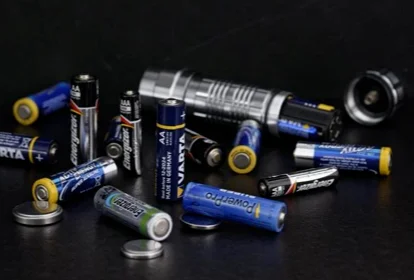
Factor 4: Certification Requirements
Due to the varying inspection requirements and tolerances, different industries have their standards in choosing among the UV LED lamps or UV NDT lamps in order to maximize the effectiveness of the inspection. For instance, the aerospace NDT industry mainly conducts fluorescent penetrant and magnetic particle inspection. A specific UV NDT lamp is then developed to cater to the soaring standards of every aspect during the process. On the other hand, other industries, including energy, pipeline and field inspection, have fewer certification requirements. However, they are usually completed in various less-than-ideal or even inferior conditions. A UV LED lamp with higher intensity is therefore required to increase the visibility of fluorescent indications.

Conclusion.
Thanks to the inventions of the UV NDT lamps and UV LED lamps, the traditional UV lamps which carry the presence of mercury are eliminated. The UV lamps have become more cost-effective, environmentally friendly, and most importantly, more reliable and stable. They are hence widely utilised in multiple circumstances, consisting of scientific and biological research, industrial development and analysis. To further optimize their power, the above four factors should be carefully considered so as to draw the best decision, in order words, the most suitable light source. Evidently, the continuous expansion of the lighting industry will sustain to uplift the growth of plentiful sectors.
How to select a suitable HVAC/R fluorescent leak detection lamp
When selecting a good fluorescent leak detection lamp, it is more important to understand what you are looking for. UV lamps and fluorescent UV dye are considered to be the best leak detection kit for detecting and locating leaks in the A/C & R systems. It will be a tough decision to make when selecting a suitable one on the current market with so many options. Finally, a quality lamp will irradiate the best beam intensity possible for the appropriate application when paired with the fluorescent dye.
Violet and UV light are a form of electromagnetic radiation. Higher energy light is characterized as having shorter wavelengths. Some wavelengths are visible while others are not. Violet light is visible to the human eye. UV light is invisible to the human eye because it is of a higher magnitude of energy. When UV light is absorbed by fluorescent materials, the light is reflected as visible light. This is known to us as UV-induced visible fluorescence.

The primary features of a leak detection lamp are the wavelength, beam area and intensity. Fluorescent dye naturally glows under varying wavelengths, but for the best fluorescent results, Violet and UV light are used because they easily activate the fluorescent response. These wavelengths fall within the 300-400 nanometer range. This information is critical because leak detection lamps must be carefully engineered to provide a strong, consistent beam profile.
Beam profile and the intensity create the focused illumination to project the light. It is best for the beam profiles to be intense and carefully focused. To help capture the leaks with certainty the light beam should be designed to form an evenly lit spot at roughly a 1/2 meter distance. Secondary features matter as well when selecting a UV torch. This can range from portability, power options and style, like an anti-roll cuff or laser pointer.
As there are many lamps on the market, there are other dyes as well. To get the brightest leak detection response you want to use quality dye with a quality lamp. Dye fluorescence is dependent on the ratio of fluorescent material to carrier oil. Economy dyes typically have low levels of fluorescent material, making them lack the concentration necessary to give a good fluorescent response when exiting a leak site.
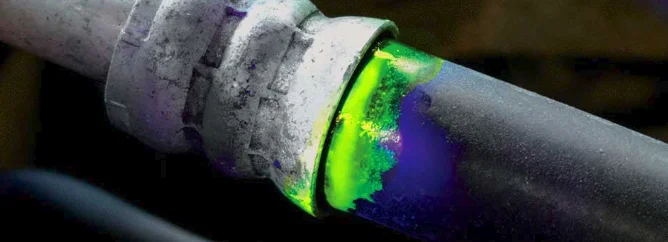
Additionally, a true quality dye is co-solvent free, fully miscible. Co-solvents can lead to premature wear or outright damage to system components. Choosing a dye that is co-solvent free, minimizes any potential compatibility issues.
When pairing a Sunlonge leak detection lamp and dye together it creates the optimal scenario for detecting the exact of every leak. Sunlonge lamps are cordless and feature a compact design for getting into tight spaces, a durable lamp body and powerful, high intensity LEDs. They can stand up to years of heavy use for continual leak detection inspection.
How to Choose the Right Surface Inspection Lamp for Your Needs?
Introduction
Under the rapid technological advancement, the number of lighting products has increased significantly. Considering the diverse characteristics of each inspection operation, technicians are expected to find the most suitable surface inspection lamp to maximize its effectiveness. In the past, this process was commonly done by random guessing. However, to increase the efficiency, a better approach can be adopted by considering different factors of the task.
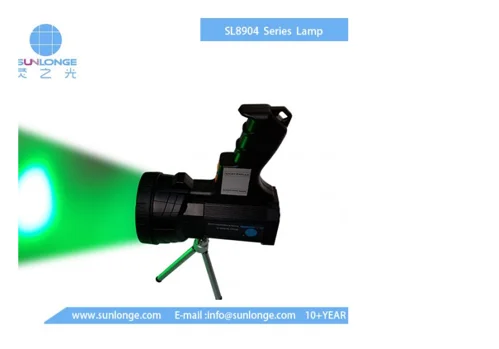
Factor 1-Surface
- General Reflectance – The general reflectance can be typically divided into three categories, including specular surface, diffuse surface, and directionally reflective surfaces. In particular, specular surfaces are similar to a mirror with a highly polished and smooth exterior, allowing a reflection that is equal to and opposite to the incident angle. On the other hand, diffuse surfaces are rough and scatter light in all directions. As illustrated in the name, directionally reflective surfaces consist of fine grooves that provide a choice of reflection direction according to the incidence angle.
- Geometry – On top of the general reflectance of the object, the geometry of the surface also affects the illumination result. For instance, when examining an object with a curved surface, the changing slope often results in the problem of uneven illumination. In the case of a specular or directionally reflective curved surface, glinting may occur, hindering the accuracy of the test. Another geometry that requires extra attention is the prismatic parts with sharp edges or steep slopes, which may lead to shadows or glints.
Factor 2: Size of inspection area.
The second factor to be considered is the size of the area for inspection. Specifically, over a large area, equipment with an elevated intensity typically produces uneven illumination. In contrast, when inspecting a small component that requires little illumination, a small light source is sufficient. Accordingly, taking the areas into account, a balance between the irradiated area and intensity can be achieved. Demonstrating with the SL8904-G Green Surface Inspection Lamp from Sunlonge as an instance, carrying a light intensity of 50000 lx at a distance of 30 cm, the irradiated area can go up to 45 cm. With a stability of over 90%, it serves as the optimal measure for the quality inspection of panels and diverse materials.
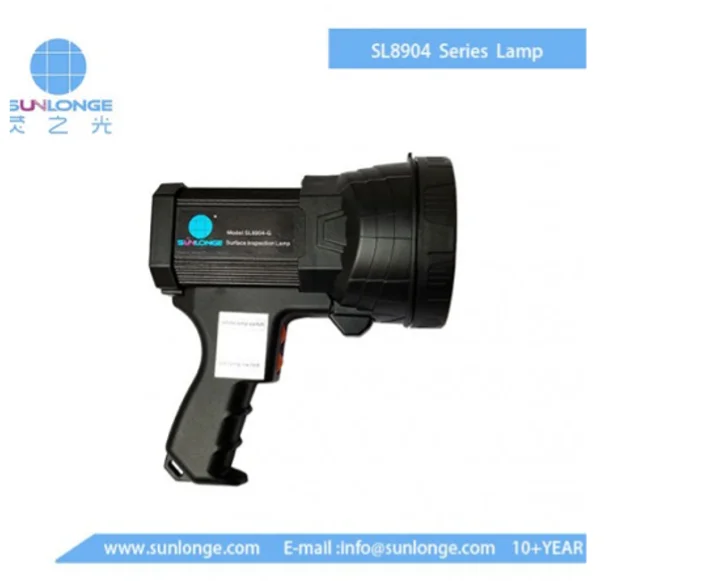
Factor 3-Light source
Thanks to the continuous development of lighting technology, light can be produced from various sources with different characteristics.
- Fluorescent lamps – A highly diffuse cool and white side light.
- Halogen lamps – A high-intensity light source with a wide spectrum.
- Light-emitting Didoes (LEDs) – A monochromatic light that allows pulsing and strobing.
- Xenon lamps – A high-intensity light source that caters to a momentary stop of a moving part.
Factor 4-Lighting techniques
In addition to the instrument applied, the lighting techniques utilized also play a crucial role in obtaining the ideal result in different scenarios.
- Coherent illumination – Frequently applied with a laser, coherent illumination is suitable for applications demanding for intense monochromatic light. Correspondingly, it is frequently adopted for targeting, aligning, and bar-code scanning. However, it also involves several disadvantages, including stringent safety requirements and potential specking and diffraction.
- Diffuse illumination – With the feature of uniform illumination generated from multiple directions, diffuse illumination is able to minimize the risk of glinting and shadows, therefore, making it the best measure for reflective surfaces.
- Directional illumination – Created by a localized source, technicians can easily manipulate the direction of the light, thus, being able to locate defects, for instance, burrs and pits.
- Polarized light – Considering the impacts of glints in the illumination effects, polarized light is created with the aim of reducing glints.
- Unpolarised light – In contrast to polarized light, unpolarized light is commonly found in factories and offices for lighting the diffuse parts.

Conclusion
With countless lighting instruments in the market, the process of choosing a suitable instrument becomes a vital task to maximize the effectiveness of the inspection. Considering the above four factors during the preparation stage, including surface, size of the inspection area, light source, and lighting techniques, technicians can find the ideal surface inspection lampaccording to the scenario and field of application, optimizing the accuracy and efficiency of the operation.
Exploring the science behind fluorescence: how do fluorescence flashlight work?
Introduction
Given the limitations of human eyes, humans have developed various tools to observe the world. One of the most remarkable instances is the fluorescence flashlight, especially when viewing things that are commonly invisible, for example, scratches and flaws. In view of the plentiful advantages and applications, the market size of fluorescence flashlights was valued at USD 444.07 million in 2022 and was projected to grow at an annual rate of 5.3% from 2022 to 2028, reaching USD 605.45 million by 2028. The surging income highlights the bright future of fluorescence flashlights and creates an opportunity for technicians to dig deeper with this fabulous tool of illumination.

What are fluorescence flashlight?
In general, UV light, a type of light energy that is invisible to human eyes, is employed in fluorescence flashlights. Upon hitting certain objects, including paints, dyes, minerals, and body fluids, UV light fluoresces, in other words, allowing human eyes to view the glow. With this feature, fluorescence flashlights can be applied in diverse fields, particularly when portability and ease of use matter. Several common applications contain forensics and counterfeit verification, mineral and gemstone observation, criminal investigation, and biological research.
How to choose the right fluorescence flashlight?
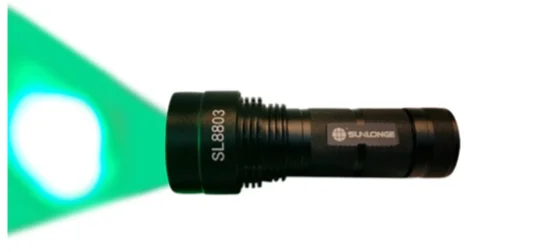
Under constant development, numerous models of fluorescence flashlights appear with distinct characteristics. To optimize the effectiveness of fluorescence flashlights, technicians should consider the following aspects when choosing the most suitable one:
- Wavelength – UV light represents a broad range of UV wavelengths across the UV spectrum, measured in nanometers (nm). Wavelengths determine the power of fluorescence effects. In particular, the closer to the ideal wavelength, 360nm, the stronger the fluorescence effects are. More importantly, certain wavelengths are unable to create sufficient fluorescence effects. Accordingly, if the wavelength is not specified by the seller and manufacturer, there is a possibility that they employ a violet or purple LED instead of a verified UV light source.
- Power – In addition to a suitable wavelength, the amount of power emitted is critical in measuring the fluorescence effect. Unlike an ordinary flashlight, humans are incapable of accounting for its effectiveness by viewing it. Correspondingly, technicians should always rely on two aspects, specifically power consumption and LED efficiency. Power consumption, measured in watts, represents the power an LED emits. On the other hand, LED efficiency defines the ratio of electrical energy to UV light energy. For instance, low LED efficiency typically refers to a flashlight installing low-cost or over-driven LED chips.
- Way of Powering – The majority of fluorescence flashlights are powered via disposable AA or AAA batteries, which are the most cost-saving and feasible approach for occasional use. However, a lengthy application is expected for numerous applications. Hence, a fluorescence flashlight equipped with a rechargeable battery may be a better option in this case. One of the most common choices is the 18650, a rechargeable lithium-ion battery reaching over 2500 mAh, equivalent to three to four disposable AA batteries. Not only can it support continuous operation, but it is also much more cost-efficient in the long term.
Recommendation of fluorescence flashlights.
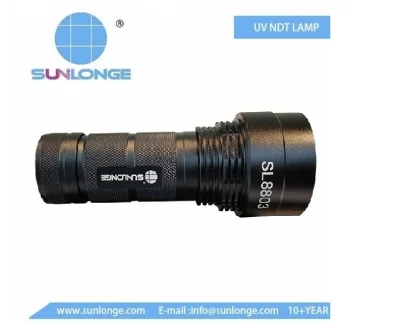
Considering the above three factors, the SL8803 series of portable excitation LED light sources from Sunlonge Limited employs the benefits of fluorescence flashlights and provides a solution to various applications. It consists of three powerful imported LEDs, carrying a peak wavelength of 455 nm and irradiating an area of 15 cm2. The average LED life reaches 30,000 hours. Powered by a polymer battery pack, it can be recharged by universal chargers. With a UV intensity of over 90% and a weight of 400 grams, the SL8803 series can be widely applied in GFP and DsRed detection, including gene plants, genetic animals, genetic microorganisms, and gene-specific expression.
Conclusion
A fluorescence flashlight offers humans a glimpse into an unseen and hidden world. It opens the gate for humans to explore nature and study science. To maximise the ideal fluorescence effects, multiple factors should be considered before deciding on the perfect fluorescence flashlight, containing wavelength, power, and way of powering. Installing countless benefits, fluorescence flashlights serve plentiful purposes, ranging from entertainment to security to detection. It revolutionizes the means of illumination, therefore lighting up the world of development.




